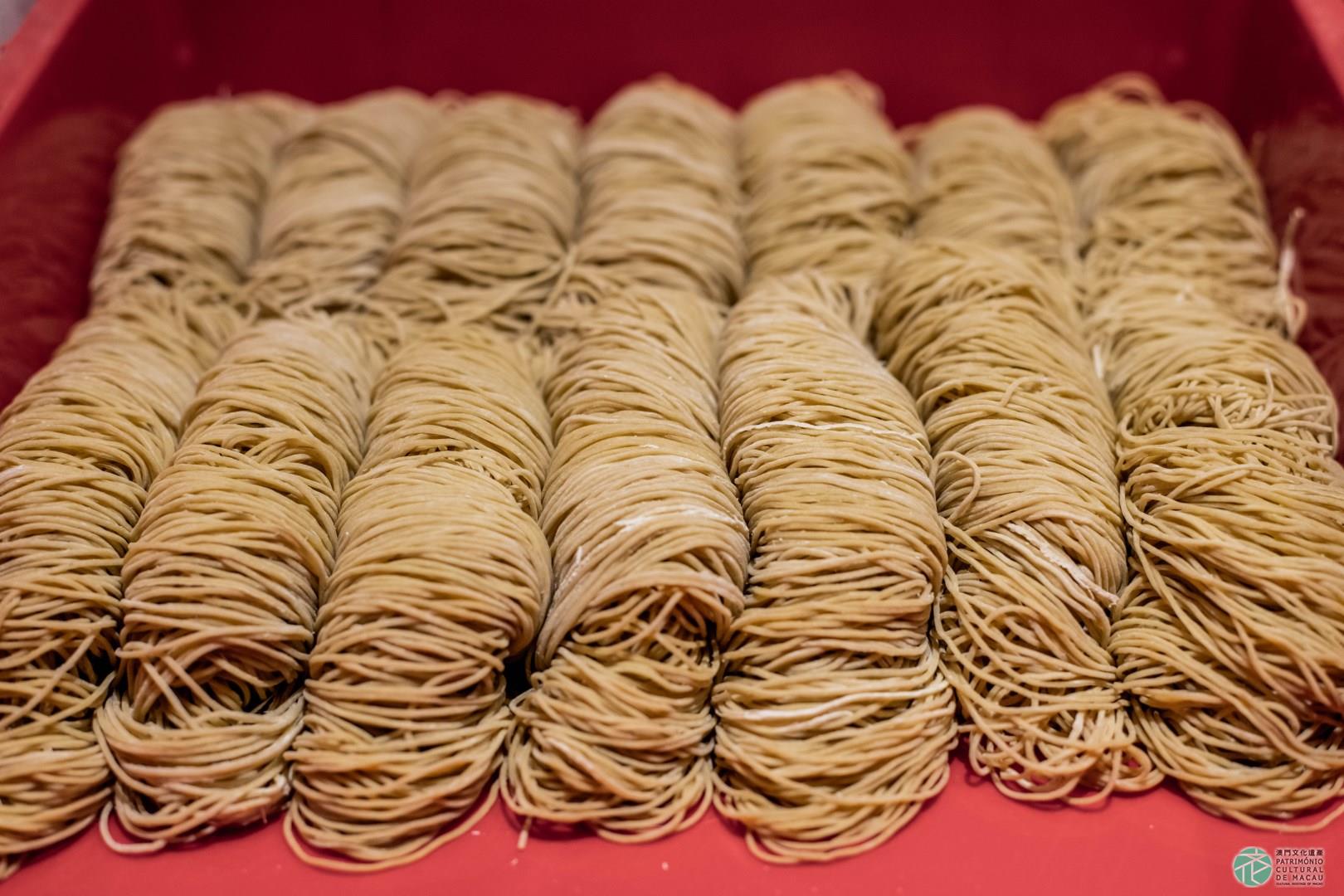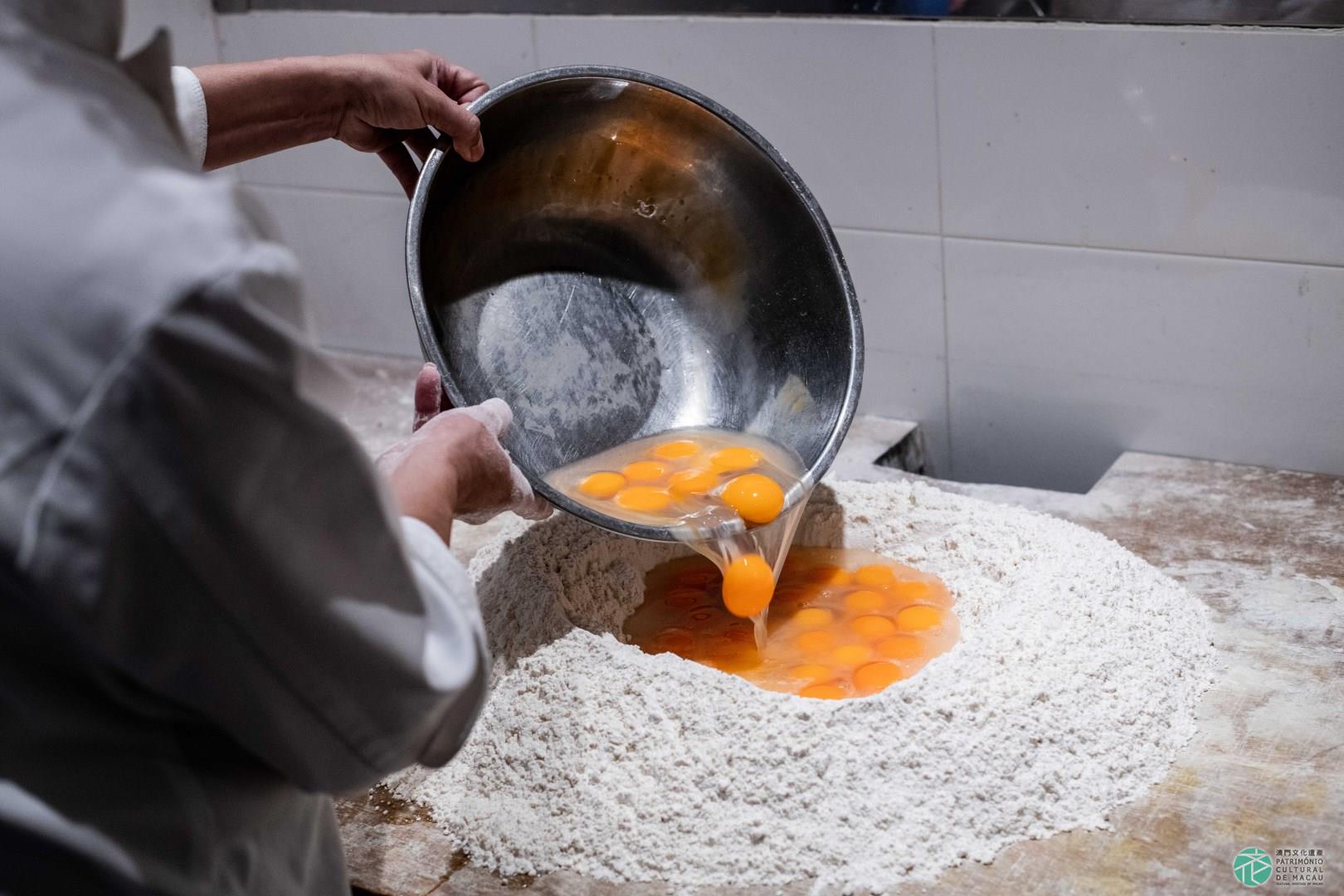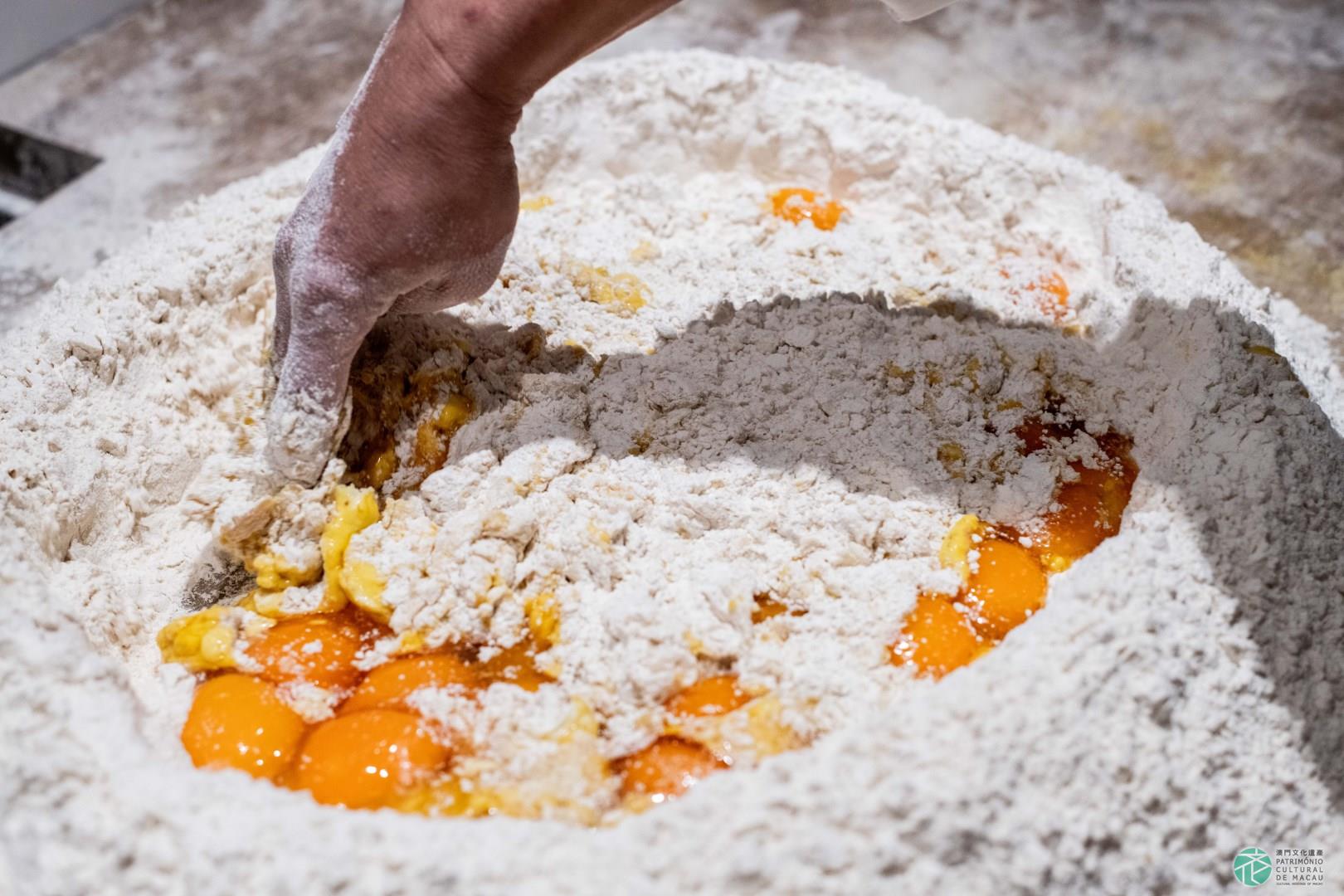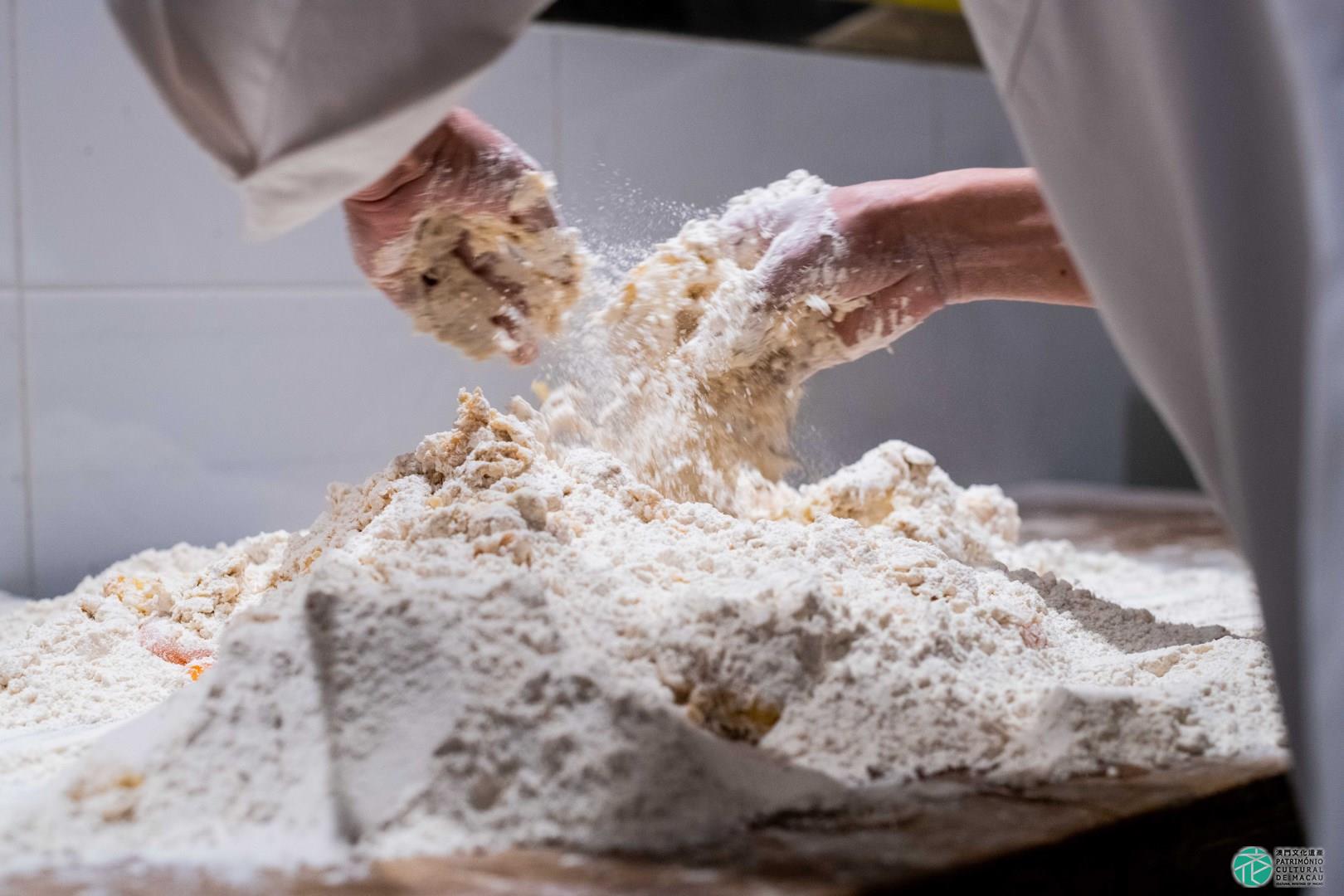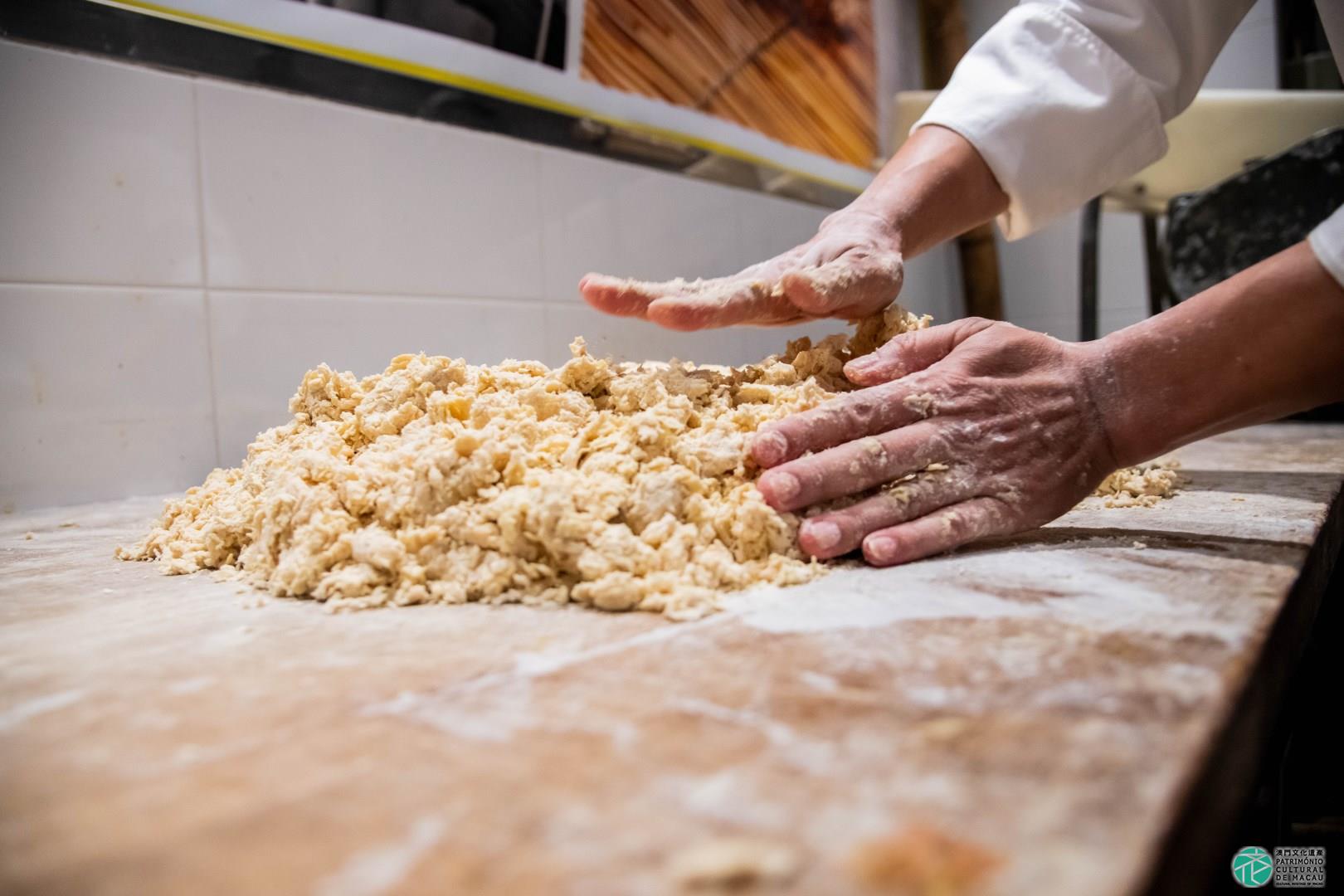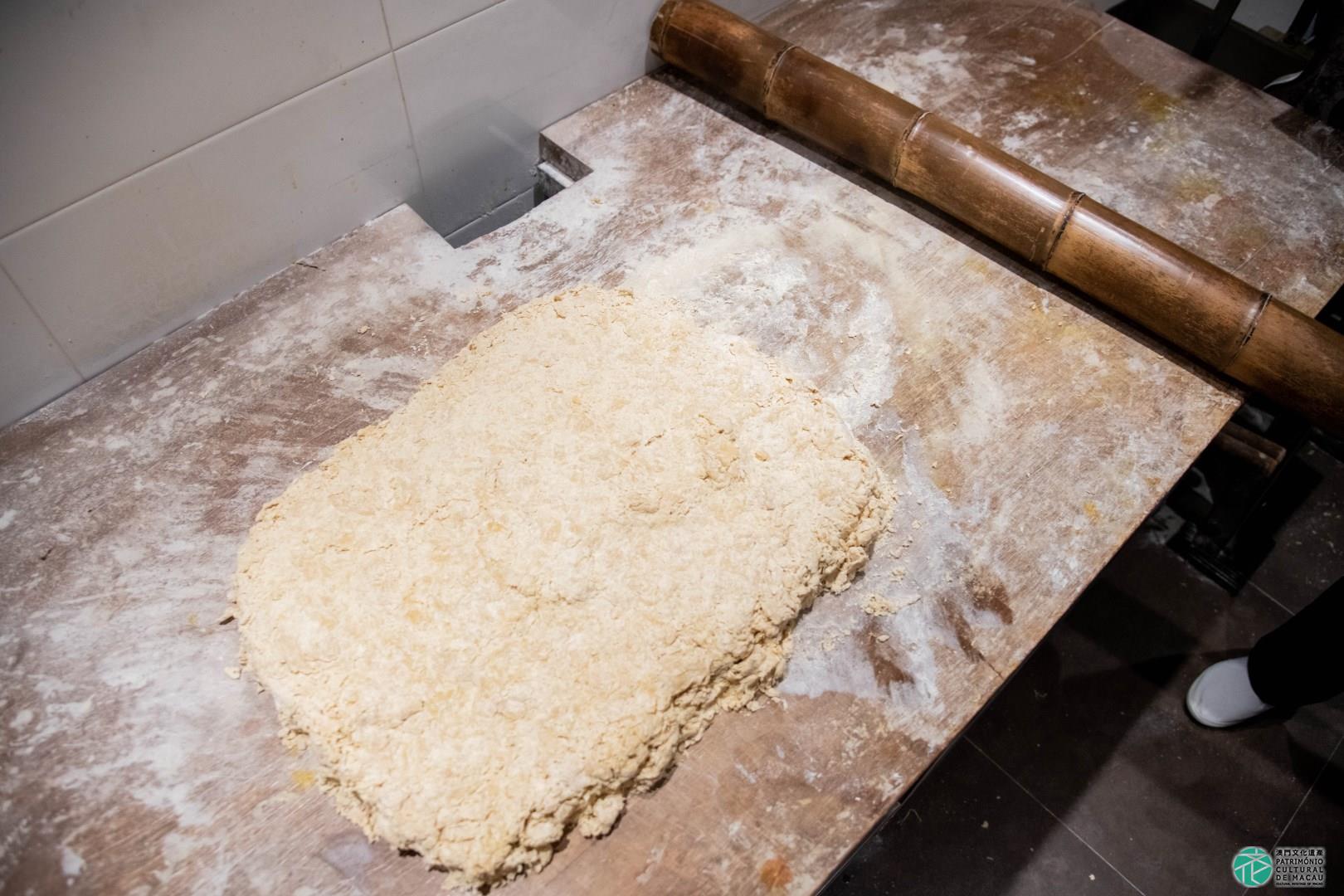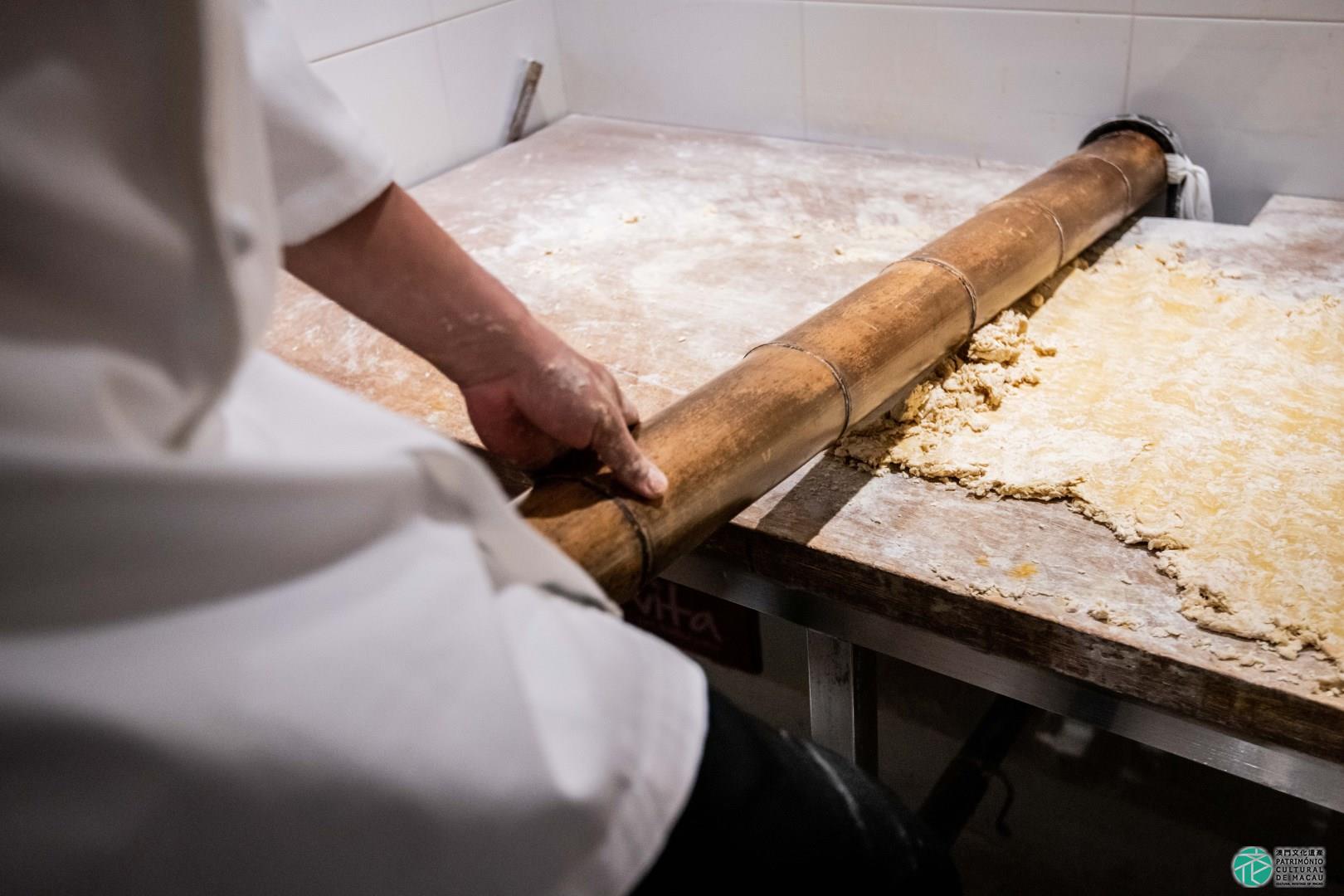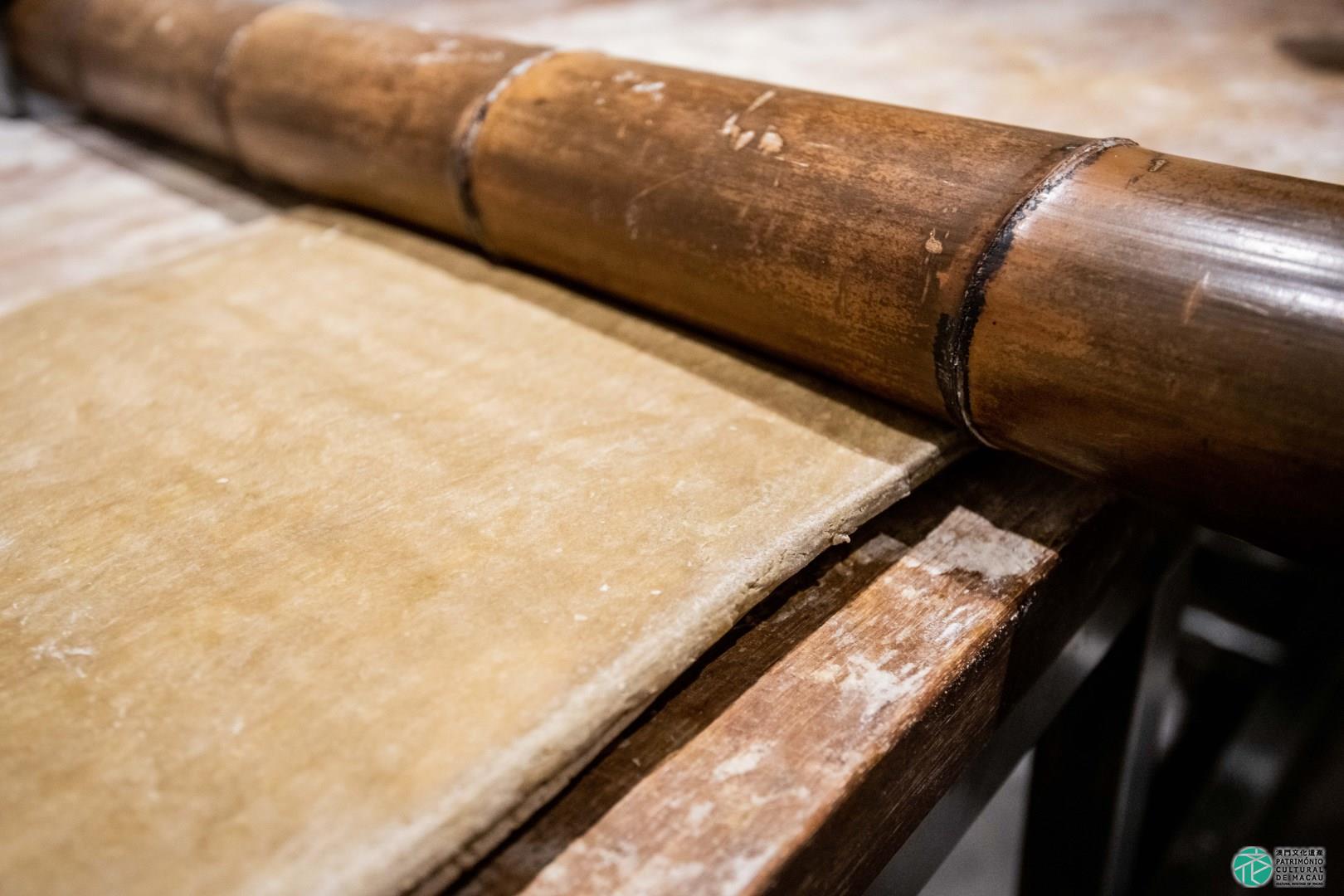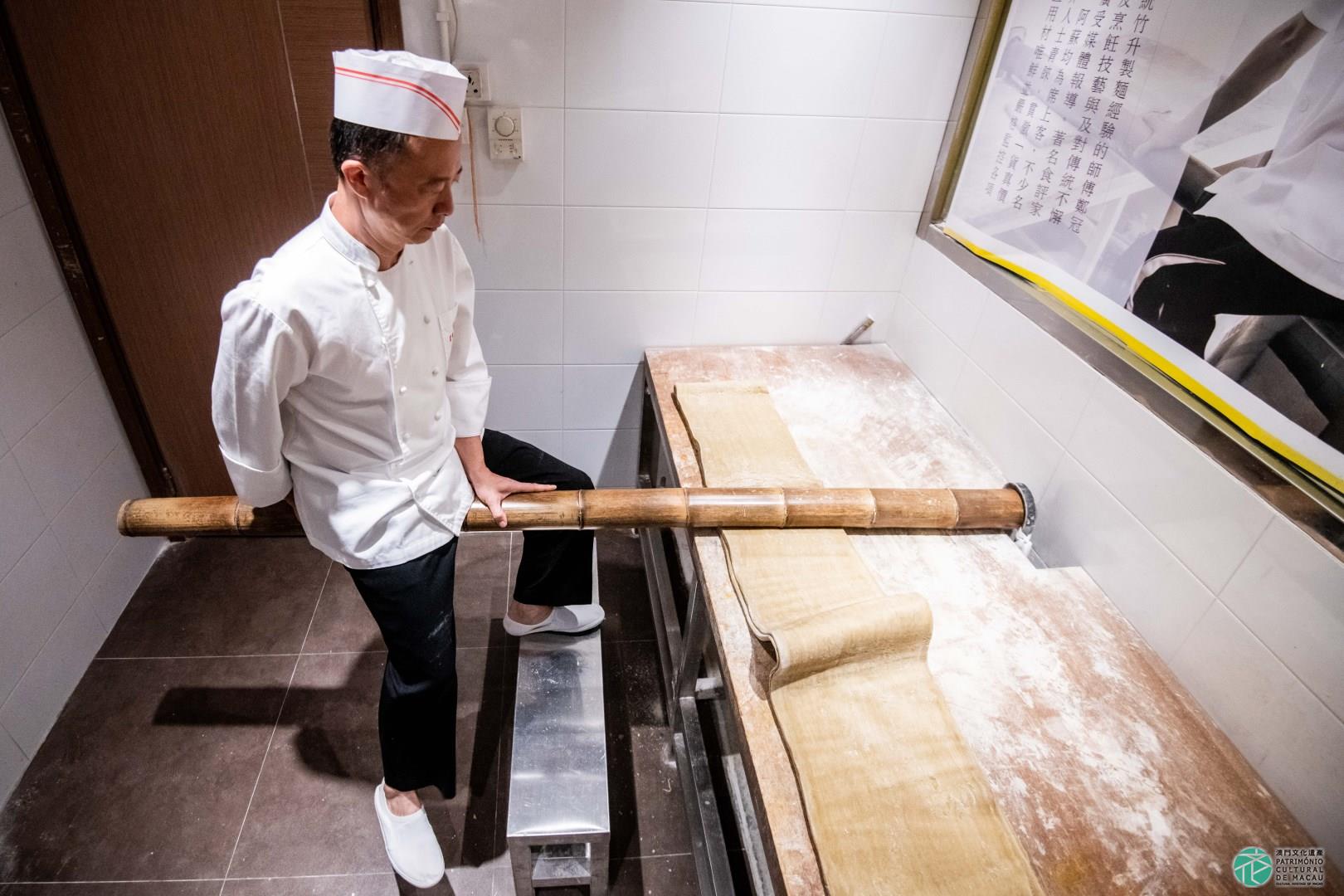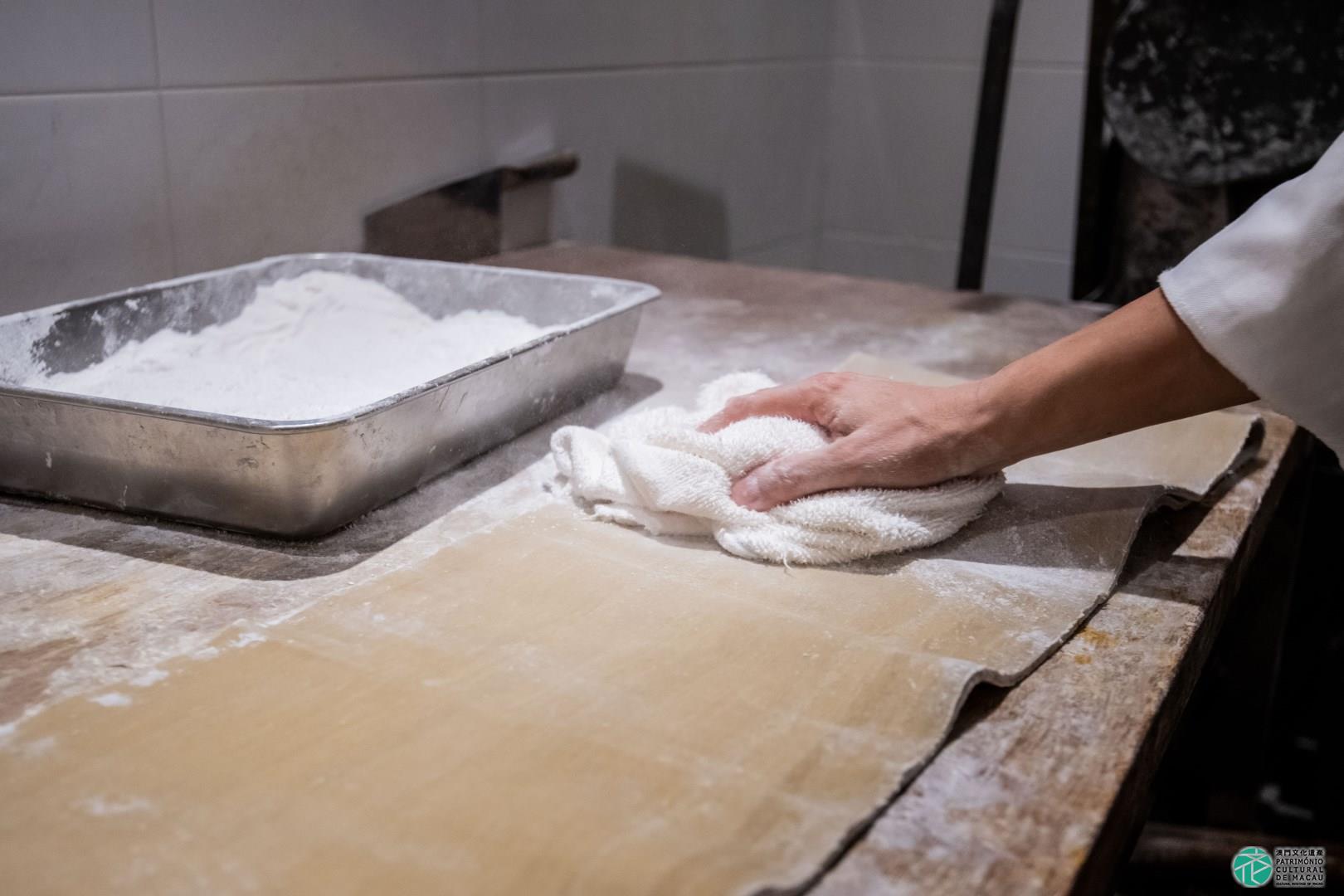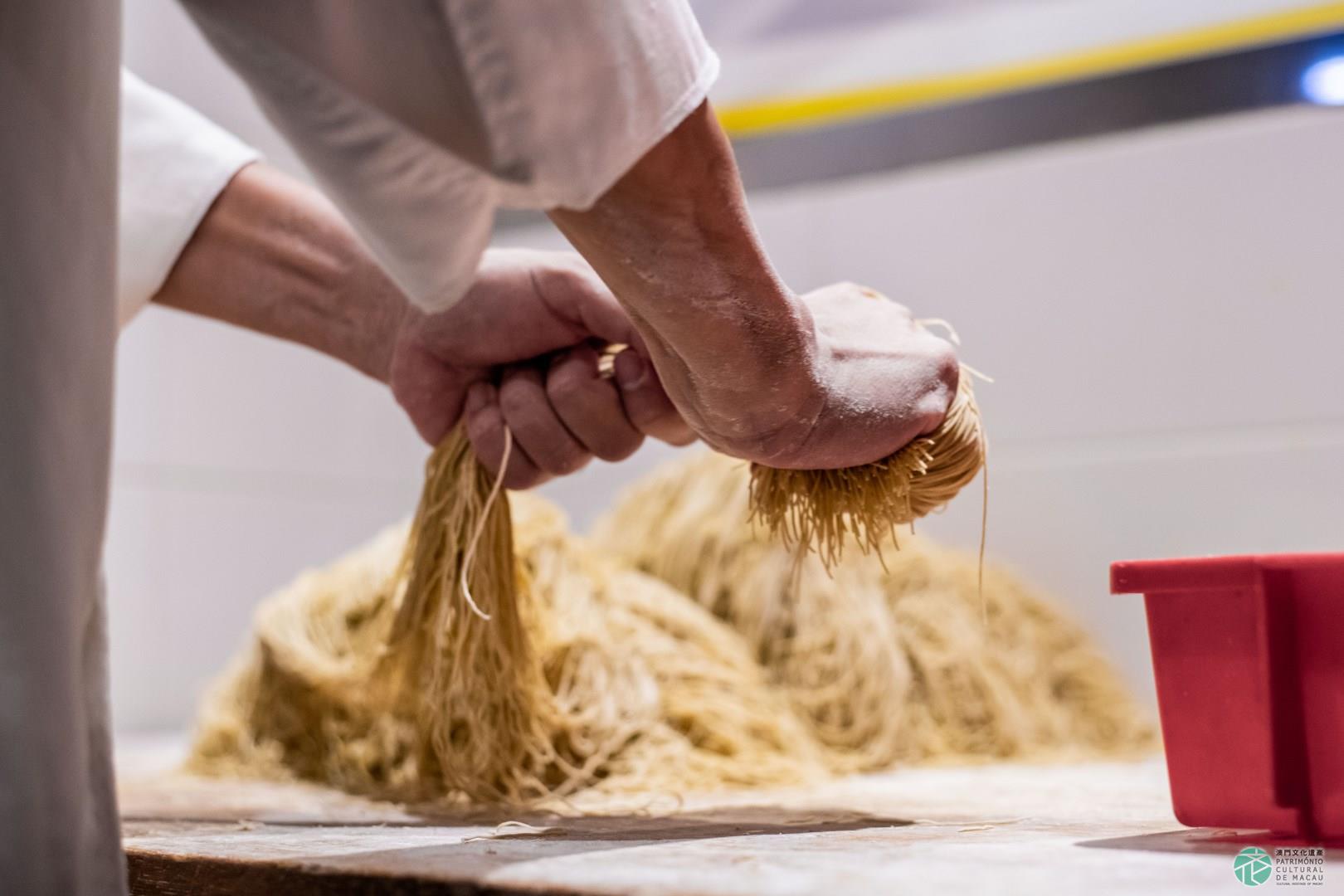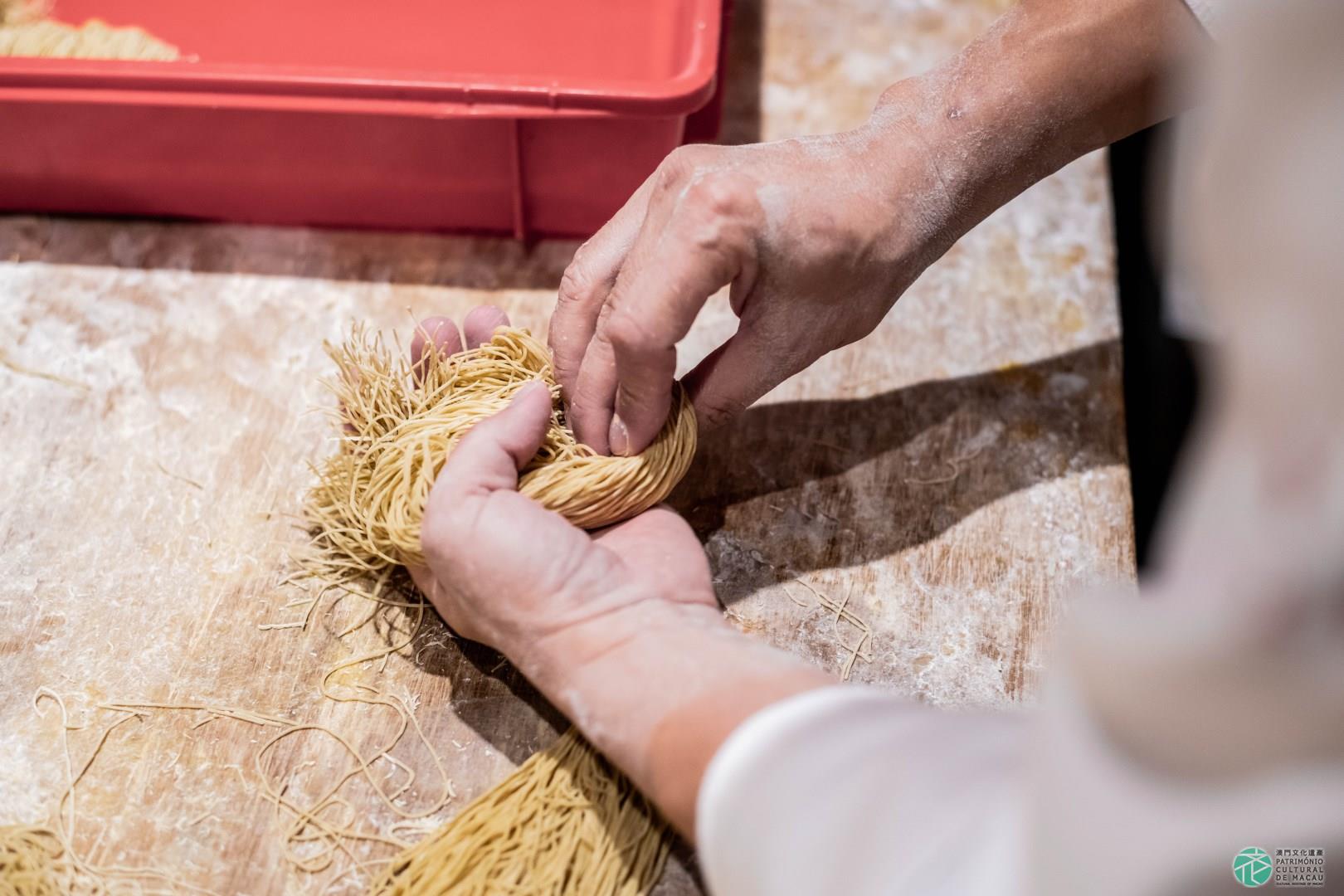Introduction:
As an essential staple food, noodles have been consumed for thousands of years in China, being part of its millenary gastronomic culture. Different manufacturing methods and ingredients have given rise to a great variety. Among them, the egg noodles from Guangdong province are composed by very thin strings of dough that have a characteristic egg aroma, being the most typical type of traditional noodles of the Pearl River Delta region. They are made using bamboo canes, reason why they are also known as “jook-sing noodles”. Jook-sing noodles are made from bread flour, duck eggs and food-grade lye water through a meticulous process of kneading the mixture. Duck eggs and food-grade lye water are used in order to give the noodles their characteristic egg fragrance and smoothness. The dough is also pressed repeatedly with the use of a bamboo cane, noting that the Cantonese pronunciation of “cane” sounds like that of “dryness”, and because of negative connotations, the word was changed in Chinese to “sing”, literally meaning “rise”. The artisan who sits on top of the bamboo cane and repeatedly presses and taps the dough in order to make it more compact. This process is usually described as “sitting on the bamboo cane”, “riding the cane” or “repeatedly pressing the cane”. The flattened dough is then folded, floured, cut into strings, which are then repeatedly stretched. The making of jook-sing noodles requires a great deal of experience and skill from the artisan that needs to know the exact proportion, consistency, softness and thickness of the noodles. Traditionally, cooked jook-sing noodles are consumed together with soups of fish, small shrimps or pork bones, with wonton, dumplings and beef briskets, while noodles can also be consumed by stirring with sauce.
Conservation Status:
Egg noodles of Guangdong follow traditional techniques, using a bamboo cane for pressing the dough and forming the noodle strings. The noodle-making techniques were passed down through apprenticeship from generation to generation of artisans. It usually took an apprentice several months or even a year to acquire this skill. In the 1970s, the noodle-making industry in Macao mechanized some or all of the production phases, thereby reducing costs, which resulted in the decline of the more traditional jook-sing noodles industry. At the same time, the skills and the great physical strength that are necessary to produce noodles, in the traditional way, have also contributed to a decline in the transmission of this knowledge and practice, with the preservation of traditional noodle-making methods now being under threat. Nowadays, there are only a few shops in Macao that continue to make the characteristic jook-sing noodles, despite the popularity of this traditional delicacy among local residents and tourists.
Heritage Value:
Jook-sing noodles are one of Macao’s most characteristic and representative traditional food items. The making of jook-sing noodles is a series of techniques that also represents the resilience and transmission of knowledge related to traditional Chinese food culture in Macao, with the features of traditional noodle-making methods also being of significant value for the study of local food culture and elements that are relevant also for a better understanding about the development of the regional noodle-making industry.
